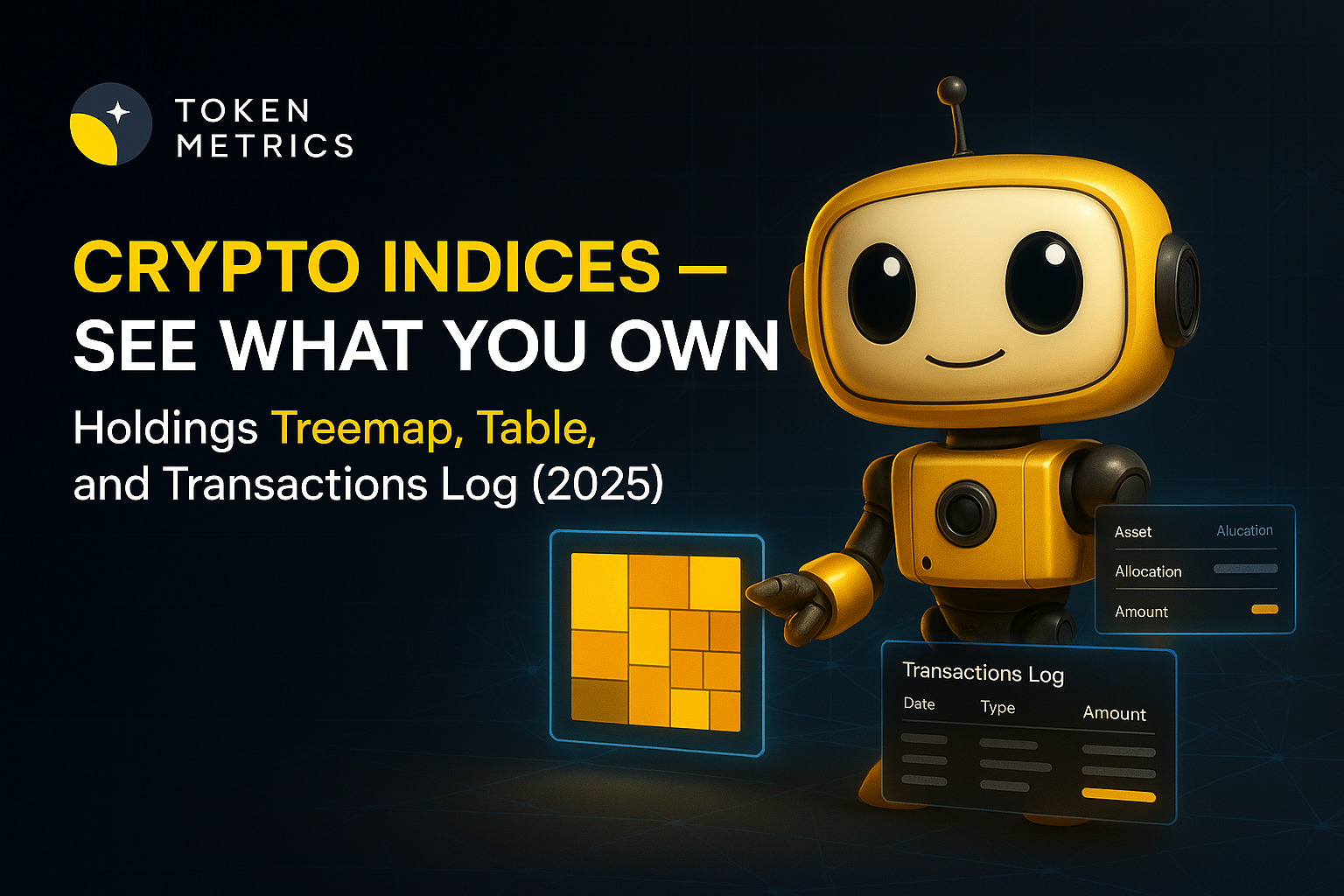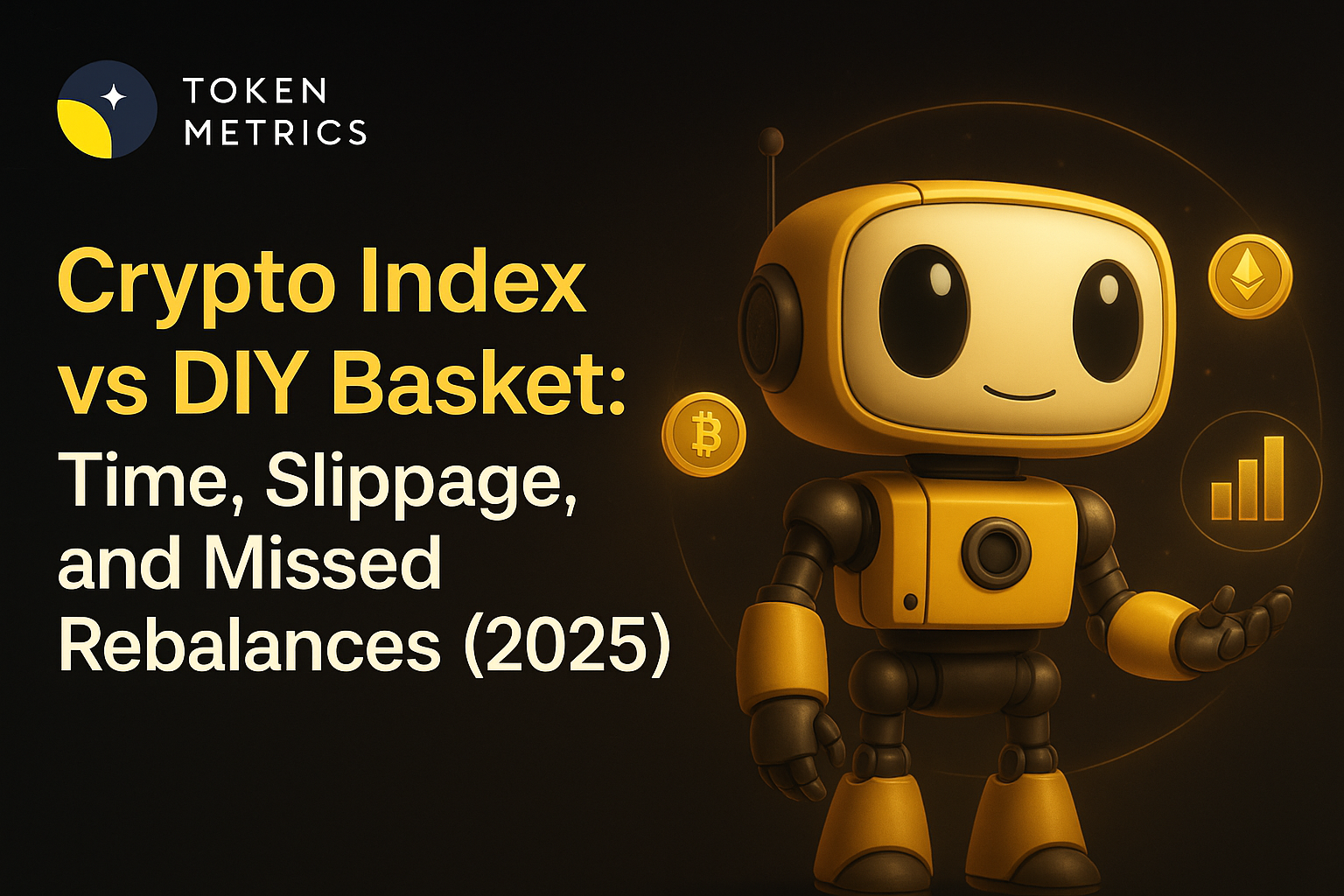How to Find the Next 100x Cryptocurrency Before Everyone Else | Token Metrics Moonshots

In the world of crypto, timing is everything. If you’re trying to turn $100 into $10,000, the holy grail is finding the next 100x altcoin before the masses catch on. These explosive opportunities are rare, but with the right tools and strategy, they’re not impossible to uncover.
In this guide, we’ll show you exactly how to identify moonshot tokens—those under-the-radar gems that have the potential to skyrocket. You’ll also learn how to use Token Metrics, one of the most powerful AI-driven platforms, to spot them before they take off.
What Are Moonshot Cryptocurrencies?
“Moonshot” is a crypto-native term that refers to a low-cap cryptocurrency with the potential to deliver outsized returns, often 10x, 50x, or even 100x. These tokens may start unnoticed, trading at fractions of a penny, but once they gain traction, they can make early adopters massive profits in a very short period of time.
Key Traits of Moonshots:
- Market cap under $50 million
- High volatility with strong upward price potential
- Community-driven marketing or narrative
- Emerging sectors like AI, DePIN, Web3 infrastructure, or meme coins
- Limited exchange listings (often only on DEXs)
Moonshots are risky—but with smart research and analytics, they can be strategic bets rather than blind gambles.
How Moonshots Work
Most 100x altcoins follow a predictable life cycle:
- Early Accumulation – Whales and savvy investors quietly accumulate before the public is aware.
- Trigger Catalyst – A social media trend, influencer mention, exchange listing, or big partnership sparks interest.
- Volume Surge – Trading activity spikes, liquidity increases, and price begins to move.
- Parabolic Rally – The token “moons” as retail investors jump in.
- Top Formation and Correction – Early investors take profits; latecomers often buy the top.
Catching a moonshot before Step 3 is your goal. You want to be in position before the breakout, not chasing after it.
This is where Token Metrics becomes invaluable.
Why Token Metrics Is the Best Tool for Discovering Moonshots
Token Metrics is a crypto analytics platform powered by AI, machine learning, and real-time data. It monitors thousands of tokens and ranks them using quantitative models, helping traders and investors find opportunities before they trend.
With features like:
- Trader Grade and Investor Grade rankings
- AI-generated signals
- Real-time ROI tracking
- Integrated trading functionality
…Token Metrics helps you act fast and stay ahead of the crowd.
Let’s walk through exactly how to use Token Metrics to find the next 100x cryptocurrency.
How to Use Token Metrics to Find Moonshots
Here’s a step-by-step guide to using Token Metrics’ Moonshot system to uncover high-potential altcoins.

✅ Step 1: Go to the Ratings Page
Once logged into the Token Metrics platform:
- Navigate to the “Ratings” tab from the main dashboard.
- This section ranks thousands of cryptocurrencies based on AI-calculated Trader Grade and Investor Grade.
Trader Grade is especially important for short-term breakout potential—it reflects the strength of a token’s momentum and technical setup.
✅ Step 2: Click on the “Moonshots” Tab
In the Ratings interface:
- Click the “Moonshots” tab at the top.
- This filters the token list to show only those identified as moonshot candidates by Token Metrics’ AI models.
These tokens are selected using proprietary algorithms that scan for:
- Sudden volume surges
- Rising trader grades
- Favorable technical and social signals
- Market cap anomalies
These are the coins flying just below the radar—with massive breakout potential.
✅ Step 3: Review Key Metrics
Each token in the Moonshots tab includes real-time, high-signal data to guide your decision-making:
- Trader Grade: How strong is this token’s short-term setup?
- Change in Trader Grade: Is momentum building?
- 24-Hour Volume: Is there growing interest or liquidity?
- Market Cap: The smaller the cap, the more upside (and risk).
- Date of Entry: When was this token added to the Moonshots list?
- Live ROI Since Moonshot: Has the token already moved—or is it still early?
You can also switch to Past Moonshots to see historical performance. Many past Moonshots have shown gains of 3x–20x within days of being listed.
✅ Step 4: Choose a Token to Explore
Click on any token from the Moonshots list to open its Token Details Page.
Here’s what you’ll find:
- Live charts with technical indicators
- Token fundamentals like supply, utility, and project roadmap
- Top holder data to spot whales or early VC involvement
- Sentiment scores and momentum shifts
This is where you do your research. Look for projects with:
- Increasing community engagement
- Clear narratives (e.g., AI, DePIN, meme, Layer 2)
- Early whale accumulation
- Undiscovered by influencers or major Twitter accounts
✅ Step 5: Buy in Seconds
Once you’ve found a token you like:
- Hit the “Buy” button right from the Moonshots interface.
- A swap widget will open inside Token Metrics.
- Connect your wallet and execute the trade within seconds—no need to leave the platform.
This frictionless experience allows you to act immediately before the market catches on.
Pro Tips for Moonshot Hunting
Finding the next 100x crypto is part art, part science. Here are a few tips to sharpen your strategy:
- Don’t Chase Pumps: Look for tokens with fresh momentum, not ones that are already up 500%.
- Use On-Chain Data: Look for early accumulation, token holder growth, and low exchange balances.
- Diversify: Don’t go all in on a single moonshot—spread risk across 3–5 plays.
- Set Targets: Know your entry and exit strategy. Moonshots can reverse fast.
Final Thoughts
The next 100x altcoin won’t look obvious at first. It will likely be a small-cap token with limited press, an emerging narrative, and strong community energy.
By combining smart research, disciplined entries, and tools like Token Metrics Moonshots, you give yourself a major edge in spotting breakout coins before the explosion.
So stop guessing. Start using AI-powered insights to track moonshots, monitor early signals, and make informed trades that could change your portfolio—and your life.
🎯 Try Token Metrics now and unlock the Moonshots tab.
Visit: www.tokenmetrics.com
Create Your Free Token Metrics Account

.png)




%201.svg)
%201.svg)


%201.svg)










.svg)




.png)